*
Science of Gymnastics Journal
José Ferreirinha, Joana Carvalho, Cristina Côrte-Real, António Silva
THE EVOLUTION OF FLIGHT ELEMENTS IN COMPETITIVE UNEVEN BARS ROUTINES
Matjaž Ferkolj
A KINEMATIC ANALYSIS OF THE HANDSPRING DOUBLE SALTO FORWARD TUCKED ON A NEW STYLE OF VAULTING TABLE
Bojan Leskošek, Ivan Čuk, István Karácsony, Jernej Pajek, Maja Bučar
RELIABILITY AND VALIDITY OF JUDGING IN MENS ARTISTIC GYMNASTICS AT THE 2009 UNIVERSITY GAMES
Trevor Dowdell
CHARACTERISTICS OF EFFECTIVE GYMNASTICS COACHING
Thomas Heinen, Pia Vinken, Konstantinos Velentzas
DOES LATERALITY PREDICT TWIST DIRECTION IN GYMNASTICS?
Ivan Čuk
Editorial
*
Science of Gymnastics Journal
José Ferreirinha, Joana Carvalho, Cristina Côrte-Real, António Silva
THE EVOLUTION OF FLIGHT ELEMENTS IN COMPETITIVE UNEVEN BARS ROUTINES
The purpose of this study was to evaluate and characterize external load trends related to flight elements in elite level uneven bars routines, based on analyses from 83 uneven bars routines from the world championships and the Olympic Games finals between 1989 and 2004. An observation category was constructed and validated, comprising eleven variables: number, difficulty, direct combinations of 2 and 3 flight elements, execution with straight or closed body configuration, preparatory elements, direction outwards or inwards to the low bar, and execution on the 1st or 2nd phase of the routine. Results showed a significant decrease in the number of preparatory elements, and the number of flight elements outwards from low bar and inwards to low bar significantly changed. With regards to the other observed variables we found no significant differences. Elite gymnasts usually perform 1 or 2 flight elements during uneven bars routines.. The difficulty of flight elements ranged from 1 to 2 D value flight elements in all cycles and gymnasts performed using predominantly closed body configurations. Based on the results it can be concluded that the number, direct combinations, and difficulty of the flight elements contradict what has been reported in the gymnastics literature, where a large increase of variables of external load in uneven bars routines was predicted.
Keywords: Keywords:artistic gymnastics, uneven bars, flight element, trends.
Matjaž Ferkolj
A KINEMATIC ANALYSIS OF THE HANDSPRING DOUBLE SALTO FORWARD TUCKED ON A NEW STYLE OF VAULTING TABLE
At the 2001 world championships in Ghent, the FIG (The International Federation of Gymnastics) replaced the traditional horse with a new vaulting table. The new style table is wider and has a more elastic surface. This has resulted in an increase in the number of male gymnasts performing the forward handspring double salto tucked.. This study aimed to determine important kinematic variables during specific phases of the vault (trajectories, time, velocity, angular velocity, angles) that influence the quality of the handspring double salto forward tucked (Roche). The sample consisted of gymnasts that performed the handspring double salto forward tucked at the 2002 World Championship in Debrecen (N=9). Statistical analyses were carried out using SPSS 15.0, 98 kinematic variables were identified, we reported the most important variables identified during the handspring double salto forward tucked movement.. The handspring forward double salto tucked is becoming a basic element on which new derivations of vaulting movements are based (i.e. piked position, or with turns); it is therefore essential to understand its parameters. The results from this study provide useful information for competitors, coaches, and judges.
Keywords: Keywords: artistic gymnastics, vault, table, biomechanics, handspring, double salto tucked.
Bojan Leskošek, Ivan Čuk, István Karácsony, Jernej Pajek, Maja Bučar
RELIABILITY AND VALIDITY OF JUDGING IN MENS ARTISTIC GYMNASTICS AT THE 2009 UNIVERSITY GAMES
Ensuring reliability and validity of judging at artistic gymnastics competitions is difficult. Despite the FIG Men’s Code of Points being changed, there is little evidence to show that these changes have had an effect on judging standards. After the last change to the Code of Points (2008) the second biggest men’s artistic gymnastics competition took place in 2009 - University Games in Belgrade. Data based on judges’ scores were analysed. By last change of the Code of Points the sum of the Difficulty score and the Execution score form the Final score. For the Execution score, which is evaluated by 4 or 6 judges (4-in qualifications and all around, 6 in finals) reliability and validity were calculated (intraclass correlation coefficient, Cronbach’s alpha, Kendall coefficient of concordance W, and a theta coefficient; differences in mean E scores between judges were tested using repeated measures ANOVA. All data was analyzed using SPSS Statistics 17.0. Results show very high reliability (e.g. Cronbach alfa range from 0.92 up to 0.99). Systematic bias in individual judge’s scores and judges’ panels were frequent. Invalidity tends to decrease as competitor numbers increase. Despite good reliability and satisfactory validity of judging at the University Games it should be emphasized that judging quality differs between apparatus, sessions and judges.
Keywords: Keywords: mens artistic gymnastics, judging,reliability, validity, university games
Trevor Dowdell
CHARACTERISTICS OF EFFECTIVE GYMNASTICS COACHING
This study is investigating the characteristics of effective sports coaching. The breadth of study method has allowed a progressively greater and a more “grounded” understanding of the characteristics of effective gymnastics coaching. The use of different information retrieval methods moving from literature review through surveys, discourse analysis and, finally, eliciting expert practitioner’s overt and tacit knowledge represents a more integrated attempt to understand the characteristics of effective coaching. The use of multiple methods of knowledge elicitation was recommended to constrain the effects of knowledge type (e.g. representations versus declarations; overt versus tacit understandings) and task-method-investigator moderators. This study produced a key list of gymnastic coaching attributions, these being planning, effective teaching, having sport specific knowledge, goal setting and “envisioned” excellence in an integrated practice. Other identified common tasks reflected learned practices while on-the-job. These tasks were inter-personal communication, leadership, “spotting”, being able to visually analyze skill practice, predict desired outcomes and monitoring students.
Keywords: Keywords: gymnastics, effective coaching, key list.
Thomas Heinen, Pia Vinken, Konstantinos Velentzas
DOES LATERALITY PREDICT TWIST DIRECTION IN GYMNASTICS?
Although twisting is a key element in many gymnastics skills, little is known about the relationship between twist direction in skills with different functional demands and other factors, like lateral preference. We explored relationships in twist direction between different gymnastics skills, and sought for significant predictors of preferred twist direction from measures of laterality. N = 44 gymnasts performed four different gymnastic skills. We analyzed gymnast’s twist direction and lateral preference. We found that gymnasts, who twist left in upright stance, twist more often right during round-off, c2 = 13.09, p < .01, and more often left during twisting somersault backwards, c2 = 17.79, p < .01. Gymnasts who were either left consistent or inconsistent in eyedness showed more often a leftward turning preference in upright stance, F(1, 42) = 10.71, p < .01, and gymnasts who were more left consistent in eyedness, F(1, 42) = 15.75, p < .01, or more right-consistent in footedness, F(1, 42) = 6.07, p = .02, showed more often a rightward turning preference in the round-off. We state that as a gymnast progresses in learning, it may be wise to experiment with both twist directions to ensure that the gymnast can explore his or her turning preference with regard to lateral preference.
Keywords: Keywords: turning preference, lateral preference, round-off, twisting somersault backwards, straight jump with full turn, handstand with full turn.
Ivan Čuk
Editorial
Dear friends,
Four months have passed since our first issue of the Science of Gymnastics Journal. The editorial board was not asleep during this time nor were our readers. Many things have happened and below is a short report of these events.
When we set out to start this journal we hoped we would attract some attention from the gymnastics community by promoting science and research in gymnastics. From 1 October to 31 December 2009 more than 3000 visitors from 64 countries visited our website at www.scienceofgymnastics.com. A great deal of thanks for such numbers goes to those who passed on the information about our journal. Let me take this opportunity to thank the International Gymnastics Federation (www.fig-gymnastics.com), the International Gymnast Magazine (www.internationalgymnast.com), www.gymnasticscoaching.com, and www.gymnastics.bc.ca in particular, and many others who have sent our address to their friends.
It is worth noting that we had visitors from all six inhabited continents of the world: from Europe, North and South America, Africa, Asia and Australia. Visitors came from places where gymnastics is an established sport as well as from places where they are just making their first tentative steps into this area.
A lot of our efforts in the last four months has gone in the improvement of the status of our Journal in international databases. Our articles are visible on Google Scholar. We have been accepted into the SIRC database of sport journals, our entry in the EBSCO SportDiscus database is pending and we have started working on acquiring a Thomson Reuter’s impact factor.
The new issue starts with an article by German authors Thomas Heinen, Pia Vinken, and Konstantinos Velentzas addressing a very interesting dilemma of twist directions. The second article is the contribution by Trevor Dowdell from Australia who is exploring characteristics of coaching. The third article is about the reliability of judging in men’s artistic gymnastics at the University Games in Belgrade 2009, written by a group of authors from Slovenia and Hungary: Bojan Leskošek, Ivan Čuk, Istvan Karacsony, Jernej Pajek and Maja Bučar. The fourth article comes from Slovenian author Matjaž Ferkolj who has researched kinematic characteristics of Roche vault on vaulting table. The second issue of our journal concludes with an article from Portugal in which José Ferreirinha, Joana Carvalho, Cristina Côrte-Real and António Silva analyze the evolution of flight element on uneven bars from 1989 to 2004.
Dear friends, please don't forget that this journal is open for submissions from all over the world. Do not hesitate to send an article as long as it is gymnastics related and follows our guidelines published on our web site. Your comments on any of the published articles or any queries you might have are also always welcome.
The Editorial Board wishes you a good reading.





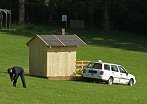

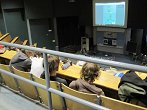


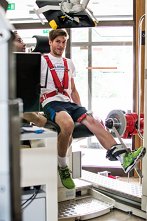

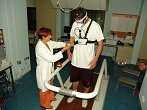



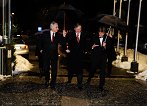




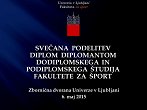







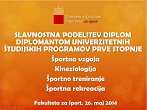
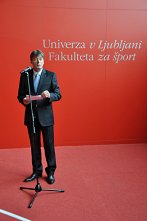



.png)